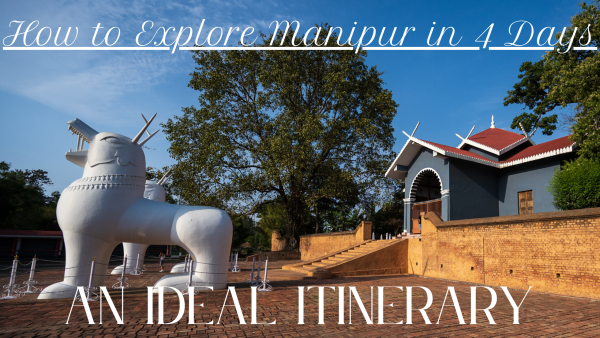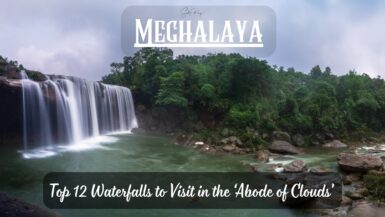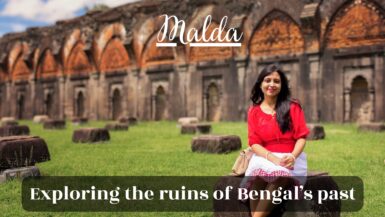Manipur is the “Jewel of India”, and rightly so. Located in the northeast, the three states of Assam, Nagaland, and Mizoram encircle it on three sides. Nature has endowed Manipur with marvels like Loktak Lake, Keibul Lamjao National Park, and Shirui Lily. Manipur is also a visual treat owing to her lush paddy fields, rolling hills, and picturesque valleys. Additionally, Manipur has a rich cultural heritage, thanks to a sundry of traditions existing among her 32 tribes. Manipur’s cultural affluence is also evident from the existence of various dance forms, such as “Ras Leela” (one of the classical dance forms of India) and “Khamba Thoibi”. Hence, Manipur offers some interesting experiences for any wandering soul.

It has been our dream to explore every “Seven Sisters” state of northeastern India. As such, we were lucky to start our tryst with Manipur. We spent 4 days in Manipur. To sum up, each day brought new experiences and taught us new tidbits about Manipur.
So, here we have discussed a 4-day itinerary for Manipur and a host of other important things.
How to reach Manipur:
- By air: Manipur’s sole airport, Bir Tikendrajit International Airport is located in Imphal. The most convenient way of reaching Imphal undoubtedly is by air. Daily multiple flights ply to Imphal from Kolkata and Guwahati, both of which are well – connected with rest of India.
- By train: As of now, Manipur has no rail connectivity. The nearest rail station is at Dimapur in Nagaland.
How to travel within Manipur:
The bus service in Manipur is not very reliable. We noticed locals rely upon only tempo services for transportation. Hence, it’s better to book a cab beforehand for traveling throughout Manipur.
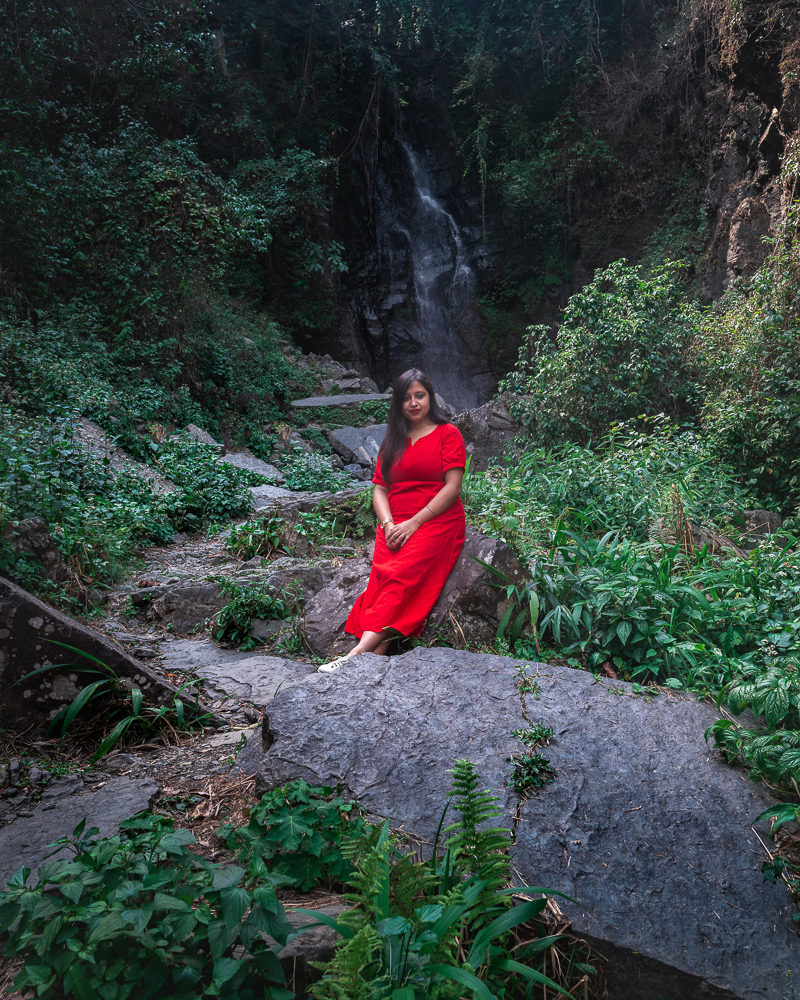
Our trip was managed by Mr. Ashok Sapamcha of Sangai Moonlight Camping. Not only did he take care of every aspect of the trip, he also provided his valuable inputs and helped us in planning our itinerary.
What is the best time to visit Manipur:
The months from October to April are perfect for visiting Manipur since the weather remains pleasant for exploring the state. Avoid the monsoon months altogether, as the monsoon in the northeast is unrelenting.
Why you need to visit Manipur:
Manipur is a fascinating place, waiting to be explored.
- There is the Loktak Lake, the largest freshwater lake of northeastern India. Loktak is renowned primarily for its ‘Phumdi’ or floating islands. These floating mass of vegetation indeed bequeath a unique attribute to Loktak.
- Manipur has world’s only floating national park, Keibul Lamjao.
- The gravely endangered, Sangai or Eld’s Deer, is also found only in this state.
- Shirui Lily, a rare type of Lily, blooms once every year, solely at Ukhrul of Manipur.
- Manipur is one of the few Indian states where cherry blossom blooms every year. Cherry Blossom Festival is celebrated every year in November at Ukhrul.
- Part of Manipur’s appeal lies in its diverse tribal cultures. There are around 32 tribes here, each having their own custom and culture.
- Manipur’s history is also rather appealing. From the ancient Meitei rulers to the Battle of Imphal during the Second World War, you can find interesting remains here.
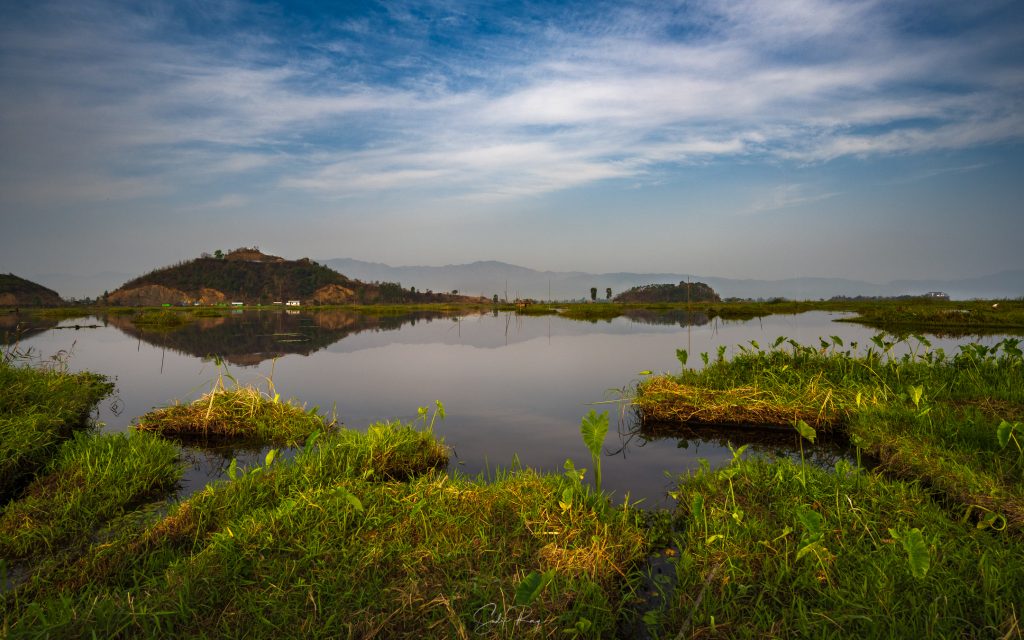
So, here’s the 4-day itinerary we followed in Manipur.
Day 1:
A rain-soaked morning welcomed us when we arrived at Imphal’s airport. Our destination was Moirang. However, we had planned to explore the following places on the way.
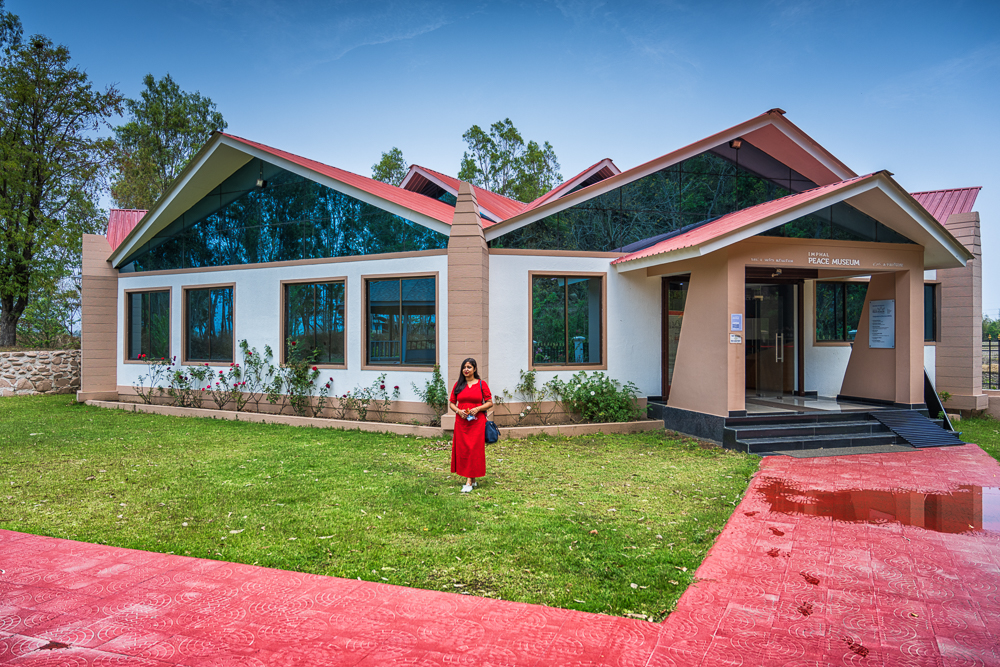
- Red Hill: This is worth visiting for the Second World War memorials. During the War, Manipur had turned out into a hotbed of fierce battles fought between the Allied powers (British-Indian forces) and Axis powers (Japan along with Indian National Army under Netaji Subhas Chandra Bose). The encounters took place from July, 1943 to May, 1944. These battles occured at Red Hill or Maibam Lokpa Ching.
- Indian Peace Memorial: It was built by the Government of Japan in 1994 for commemorating 50th anniversary of the Battle of Imphal. Revered as a symbol of peace, it has been consecrated in memory of those who lost their lives in the War.
- Imphal Peace Museum: The museum has remarkably preserved artifacts dating back to the War. You can find written first – hand experiences of the War, remains of soldiers’ uniform, shells, mortars etc. It is amazing how this museum honor memories of both the victor and the vanquished.
- Sadu Chiru waterfall. The road took us through little villages until we reached our destination. The waterfall, also called Leimaram, lies at the end of a short hike through a forest. The waterfall is not much worthy and it is more like a local picnic spot. However, we did like the quaint ambiance.
- Bisnhu Temple of Bishnupur. Built by King Khyamba, it is believed to be the oldest Bishnu temple of Manipur. The temple is certainly unique.
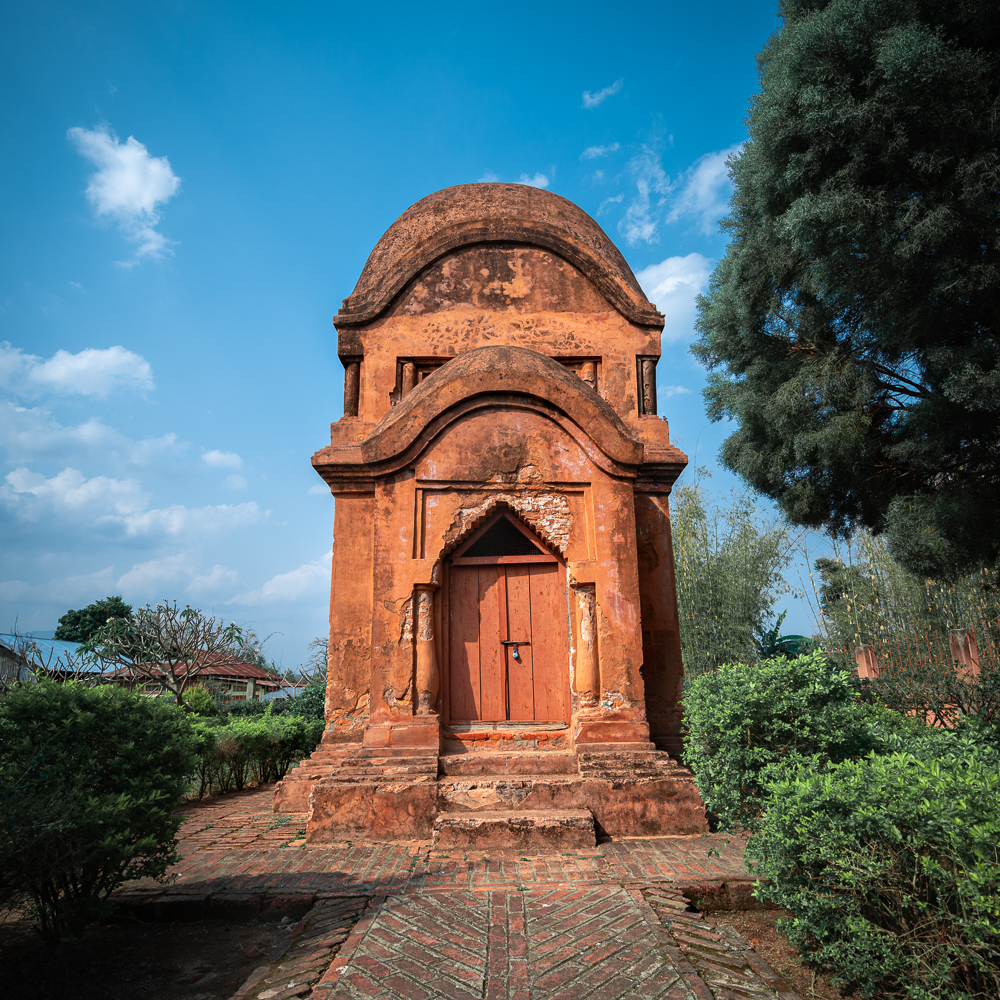
It was afternoon when we reached Moirang. Jiteswar took us to a shanty hotel for dinner, which apparently serves the best Manipuri food in the town. A few moments of apprehension later, we did enjoy the simple lunch here.
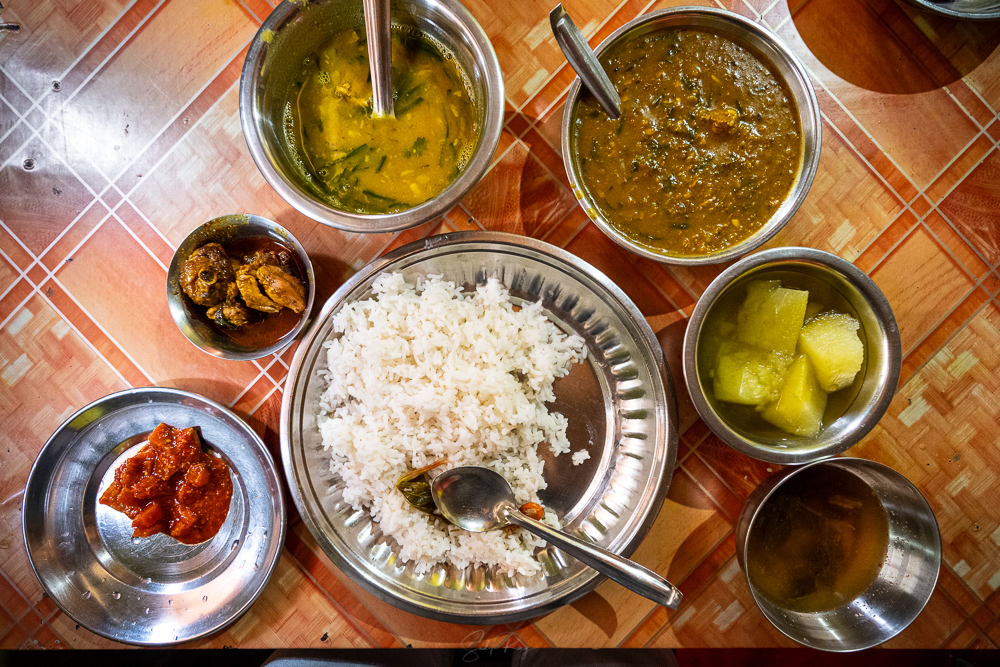
After lunch, we proceeded to our next and final location. A right turn and there it was – the Loktak Lake. Two conjoined boats waited for us for taking us to the homestay. The boats navigated through phumdis and clusters of vibrant lotus. We also spotted many egrets and storks on our way.
The sun had already begun to set when we reached homestay. We watched a beautiful sunset while sipping tea and munching on colorful fryums. We chatted and did stargazing for the rest of the evening with a backdrop of crickets chirping and frogs croaking.
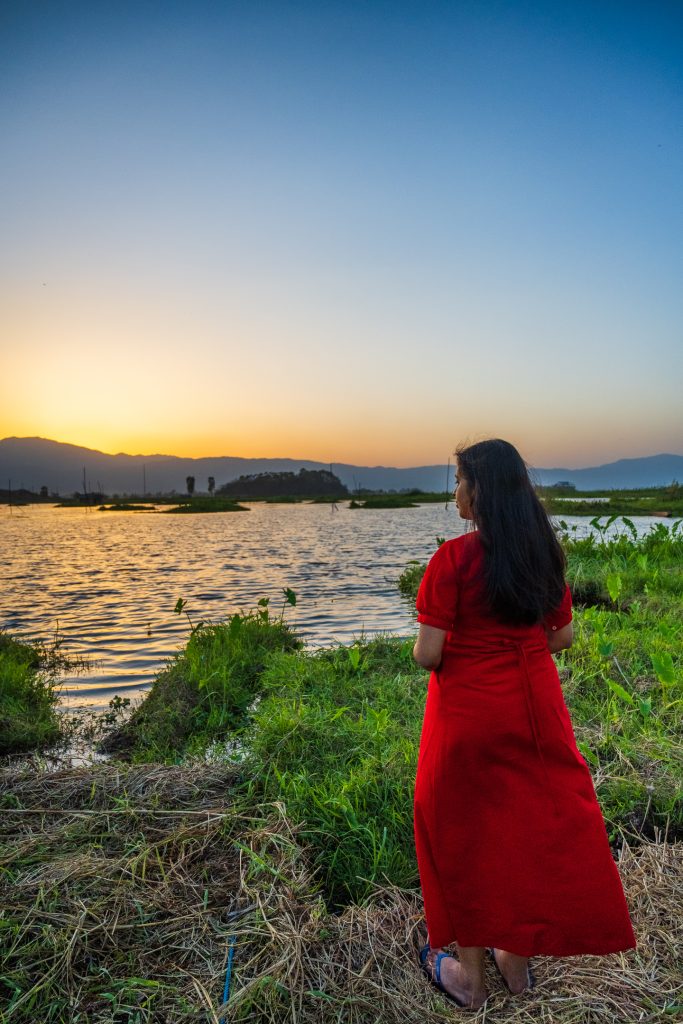
Where to stay in Loktak Lake:
We stayed at Loktak Aquamarine Floating Homestay. The homestay literally floats as it has been built on phumdis. For details on this unique homestay, check our blog here.
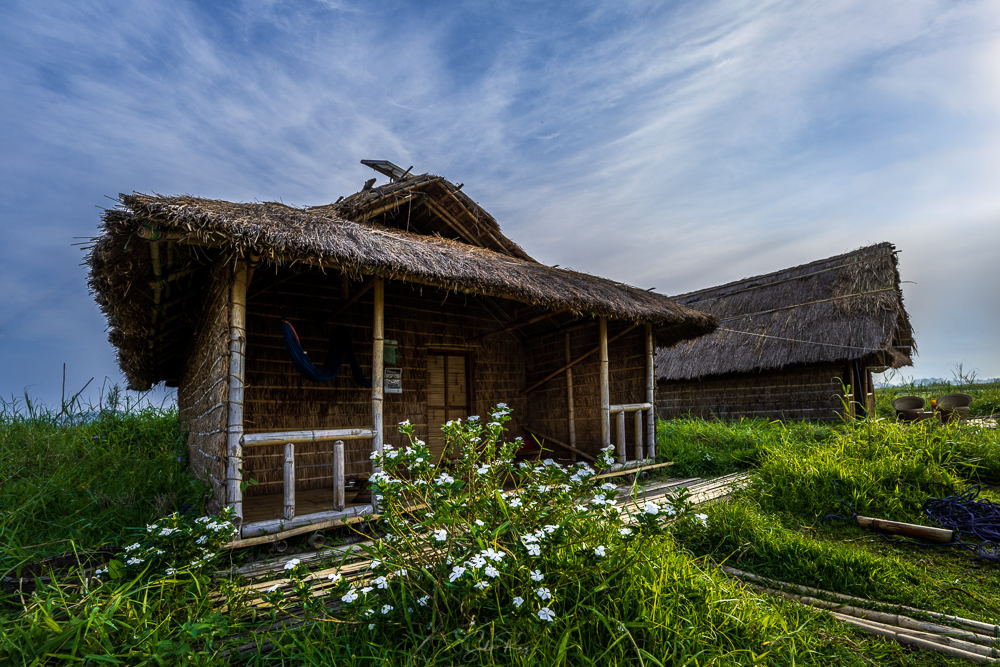
Day 2:
The second day started with an early morning boat ride on Loktak Lake. This gives a brilliant scope to enjoy the serenity of the lake as also the daily activities of fishermen. You can watch scores of fishermen busy with their nets and traps for collecting the catch of the day. Many others gather edible weeds from the lake. We further spotted some women collecting lotus flowers, which are essential in Meitei religious rituals. For learning more on Loktak Lake, read our blog here.
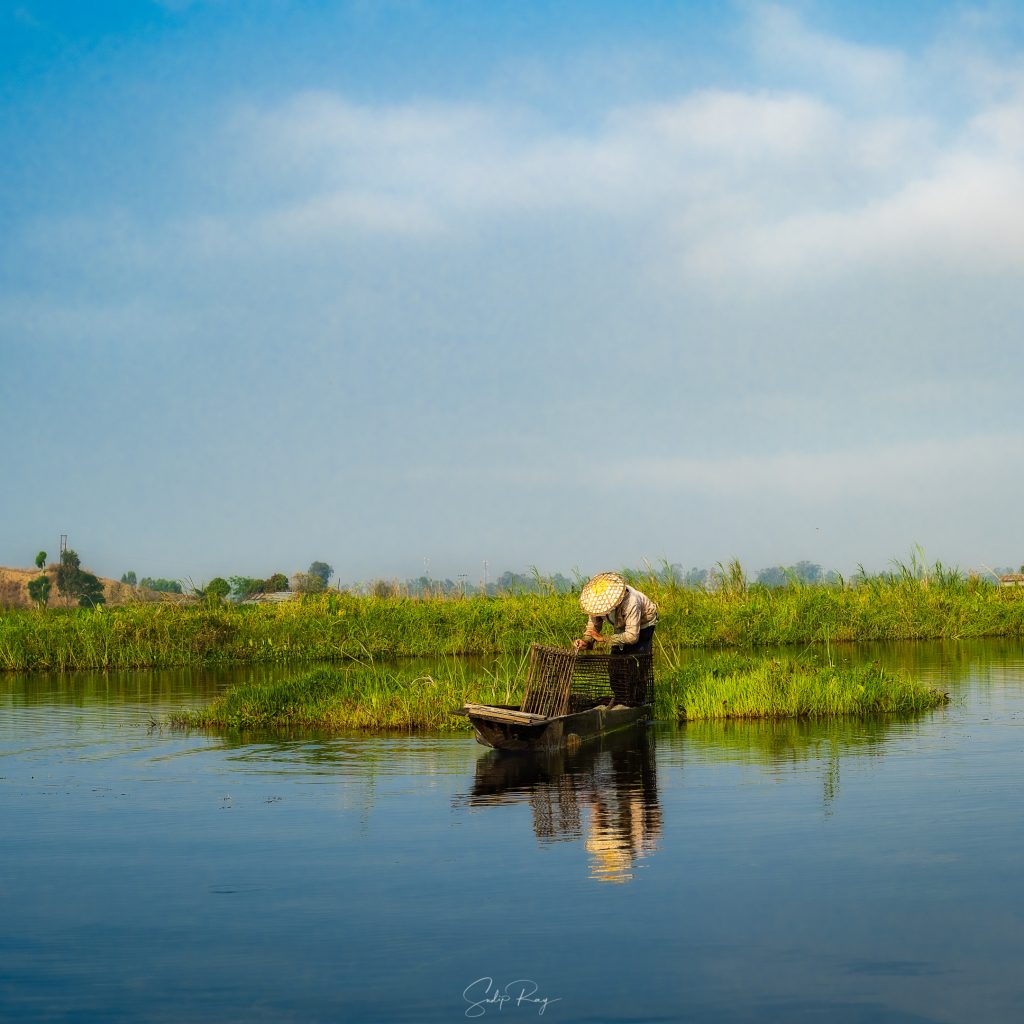
After having breakfast, we went out to explore the town of Moirang. We visited the following places:
- Sendra view point: It provides a beautiful view of the Loktak Lake.
- Chauba Ching view point: Previously, it formed a part of the now deserted Assam Rifles Camp. The watchtower now provides perfect view of the Loktak Lake and its phumdis.
- INA Museum: Formerly headquarter of Indian National Army or Azad Hind Fauj of Netaji, it now houses priceless documents, letters, photographs etc. of Netaji.
- Ibodhou Thanjing Temple: Thanjing is one of the principal deities of Meitei community. This temple is dedicated to him. Moreover, Manipur’s famous “Lai Haraoba” festival is celebrated here.
- Ima Keithel: Like Imphal, Moirang has an Ima Keithel or women’s market. Though it is smaller than the one found in Imphal, the spirit is same nonetheless.
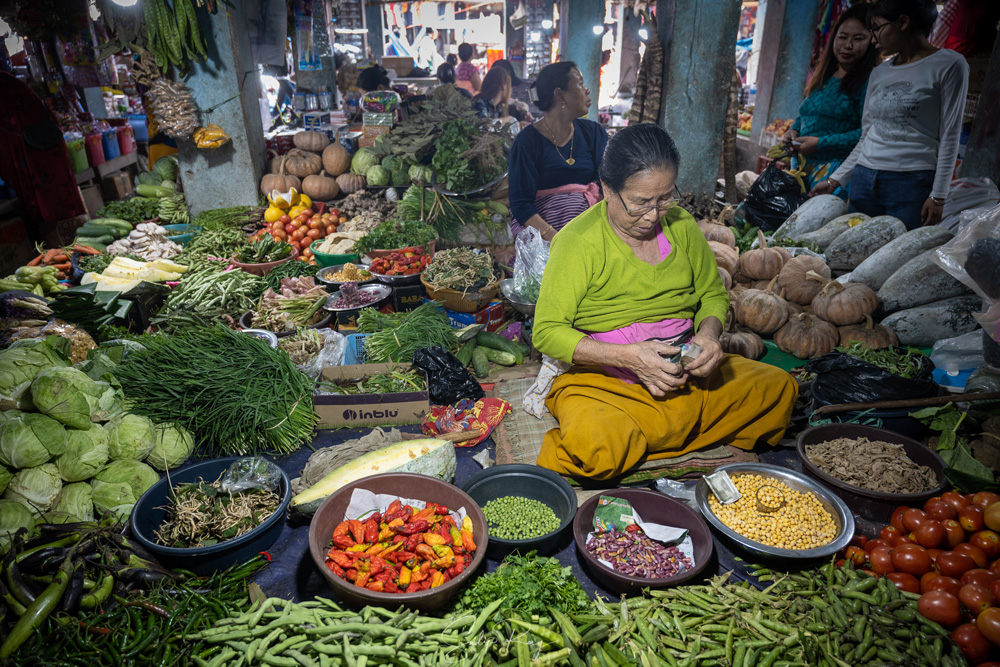
During sunset, we went out for another round of boating around Loktak.
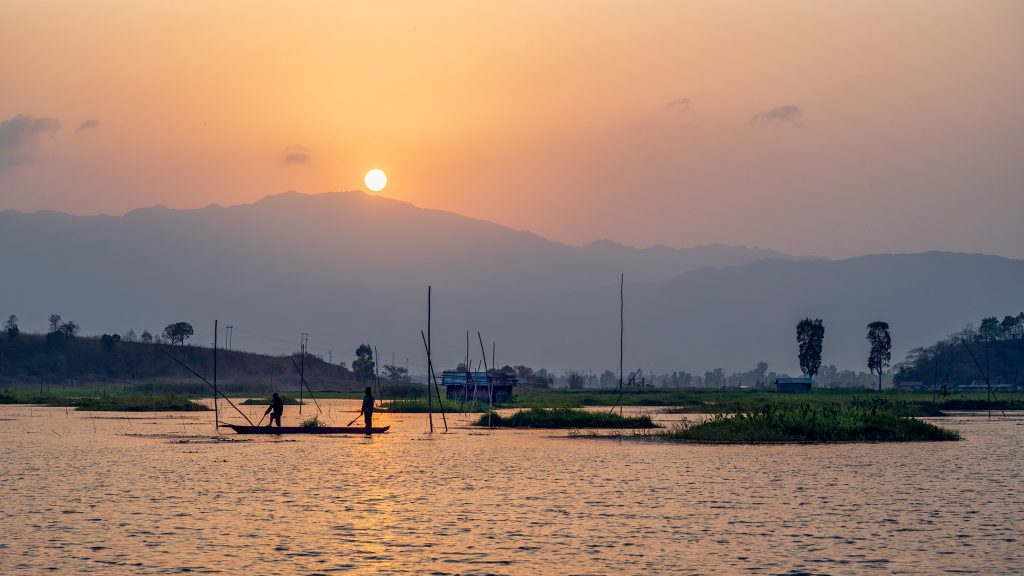
Day 3:
The next day, we went to the Keibul Lamjao National Park as early as possible. As mentioned earlier, it is the only floating national park in the world. It is a part of the expansive Loktak Lake and plays a significant role in the preservation of Loktak’s ecology. Moreover, Keibul Lamjao is the home of the vulnerable Sangai deer.
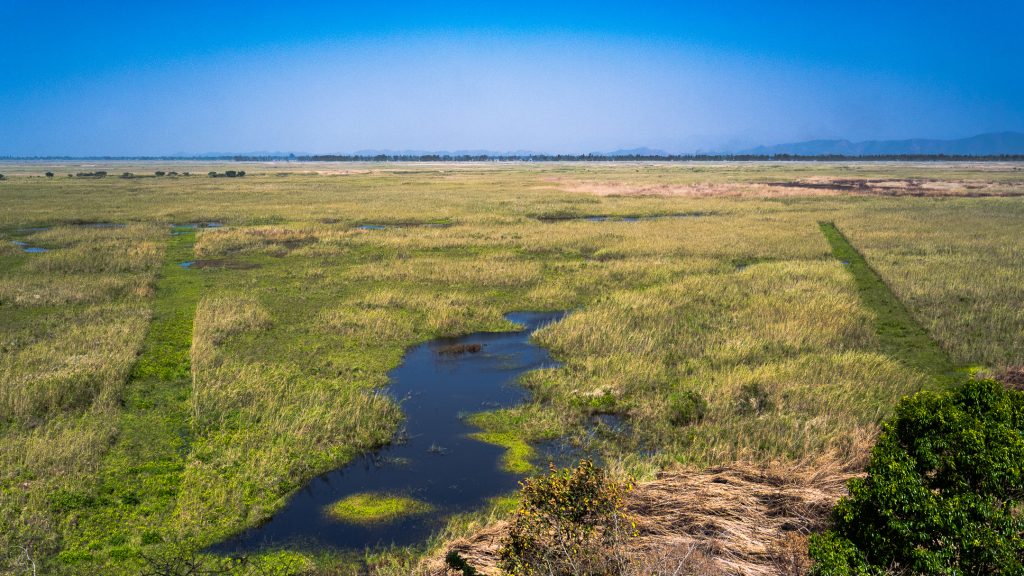
The Sangai deer are primarily visible in the early morning. They come in herds for grazing during this time. We were lucky enough to spot a few, including a stag and a fawn. Learn more about Keibul Lamjao in our blog here.
We bade Moirang adieu and moved on to Imphal. The day was reserved for exploring the beautiful capital city of Manipur.
A visit to Imphal remains incomplete without visiting the following places:
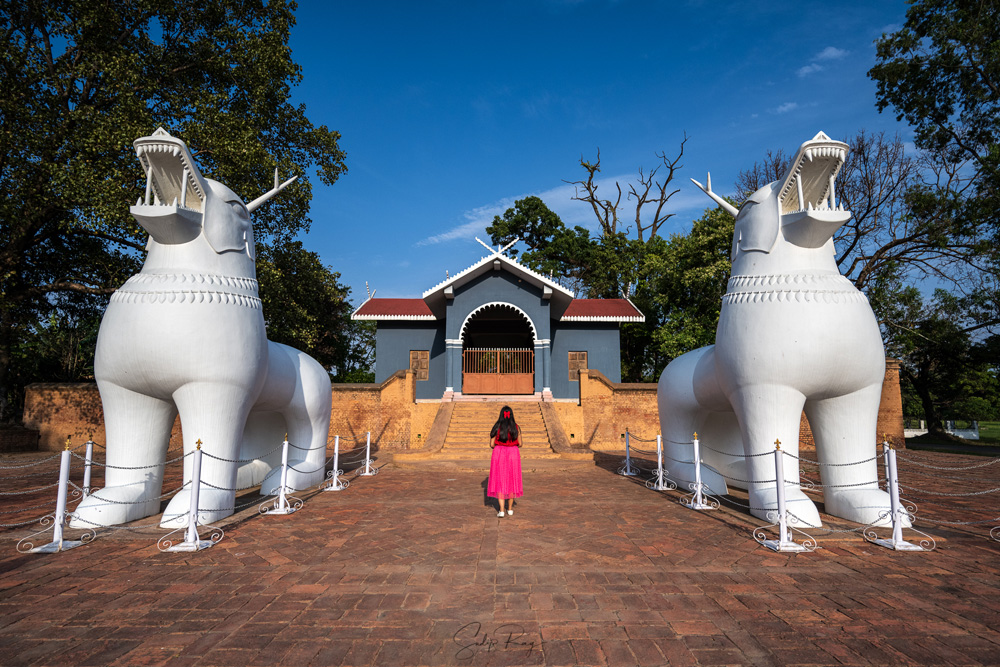
- Kangla Fort: Regarded as the prime attraction of Imphal, it served as the seat of power of the Meitei rulers right from the ancient period up to the conquest of Manipur by the British in 1891 AD.
- Ima Keithel: It is the famous women’s market of Manipur. Accordingly, it is believed to be the largest market of its kind in the world.
- Shree Shree Govindajee Temple: It is the largest Vaishnavite temple of Manipur.
- Imphal War Cemetery: Here lies the graves of those valiant soldiers who fought for the Allied side and lost their lives in the War.
- Nupi Lan Memorial Complex: Its purpose lies in preserving the memories of the brave-heart Manipuri women martyrs who fought against the British on 13th December, 1939.
- Manipur State Museum: It displays different tribal attire, royal costumes, weaponry, valuable historical documents and scores of other priceless artifacts.
- Manipur Zoological Garden: Along with Sangai, there are Hoolock gibbon (India’s only ape), Slow Loris, Himalayan Sloth Bear and others. In case if you missed Sangai at Keibul Lamjao, you can see a few here.
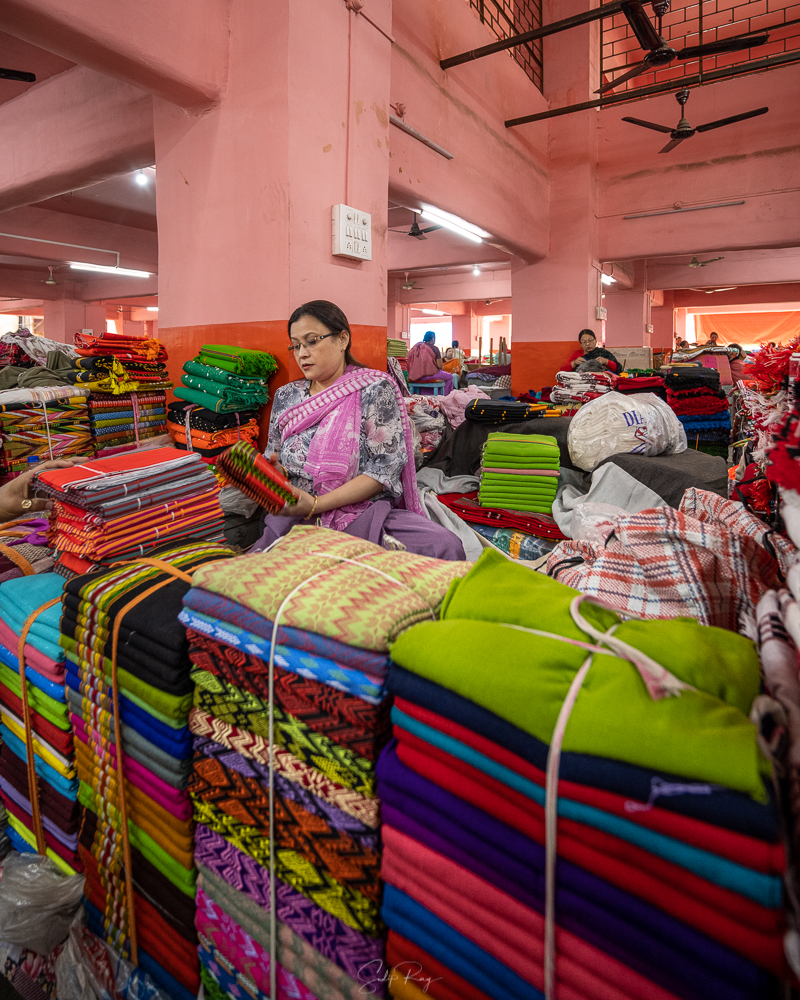
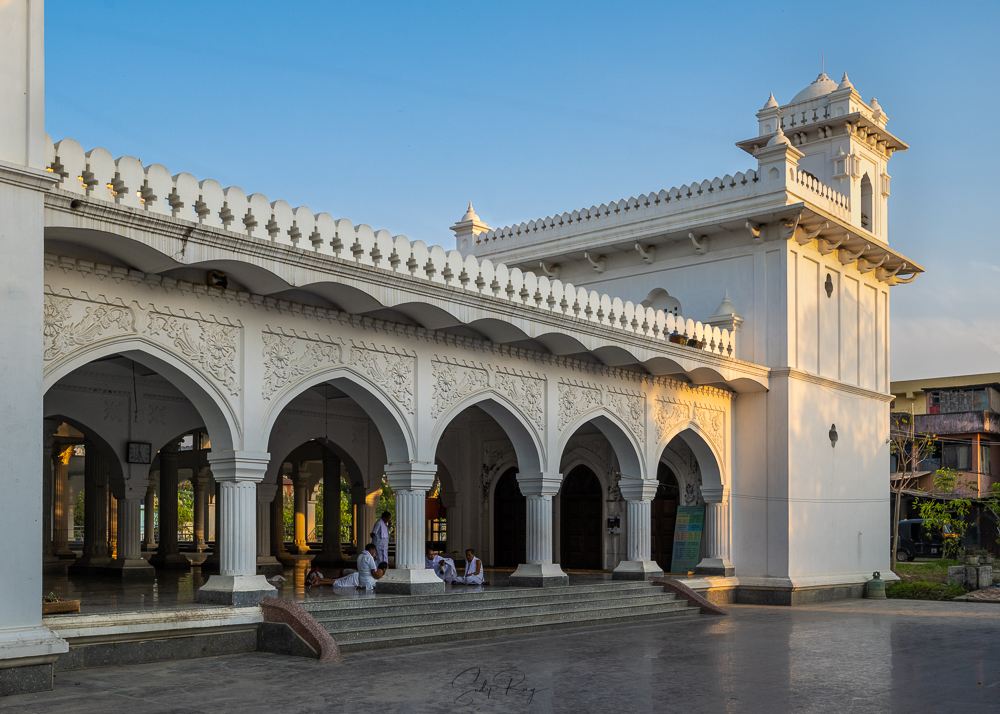
Where to stay in Imphal:
We stayed at Yum & Hills Cottage. It is a pretty homestay, located on the outskirts of Imphal. The cottages resemble traditional Manipuri houses and are spread across a nice garden. Also, the owners are warm and helpful.
Day 4:
For our last day, we visited the Andro village. Located near Imphal, the first settlers of Manipur lived here initially. Andro is popular for four reasons:
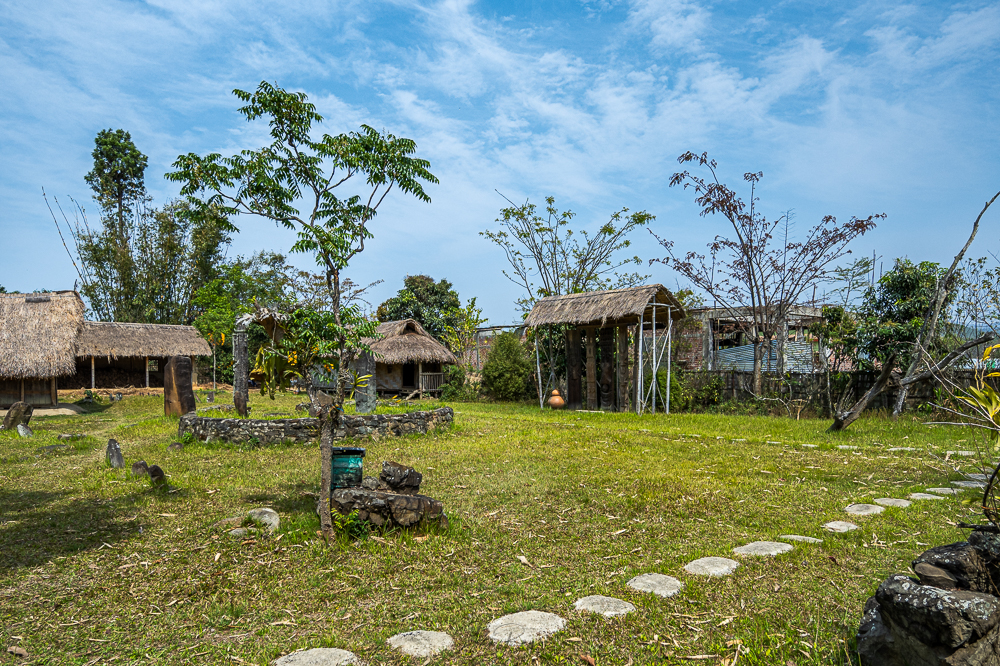
- Its traditional method of pottery called “Charai Taba” or coil pottery, practiced only by married women of the village.
- Its indigenous alcoholic brew called “Sekmai” and “Andro”.
- The ancient temple of Mei Mutaba dedicated to Panam Ningthou, the village deity.
- The cultural complex cum museum which showcases the culture and conventions of northeast India’s diverse tribes.
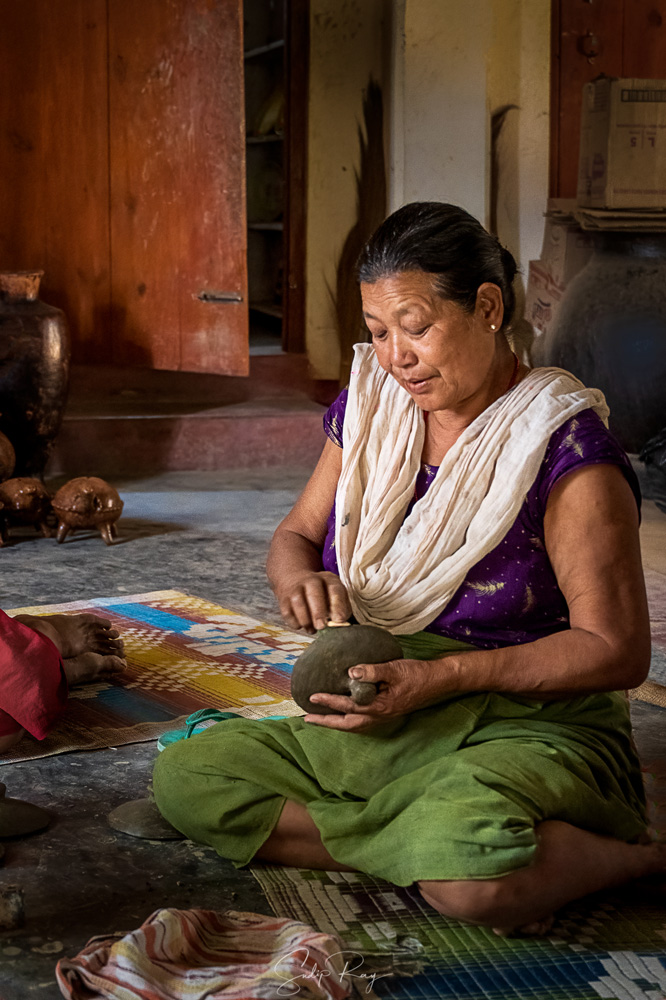
From Andro, we travelled to Sanamahi Kiyong temple, perched atop the Nongmaijing Hills. Lord Pakhangba, the ancient Meitei God, is worshipped here. Regarded as the main center of Sanamahism, it attracts pilgrims not only from Manipur but also neighbouring states of Assam and Tripura. The temple in its brilliant colors stands out amidst the greenery of the hills.
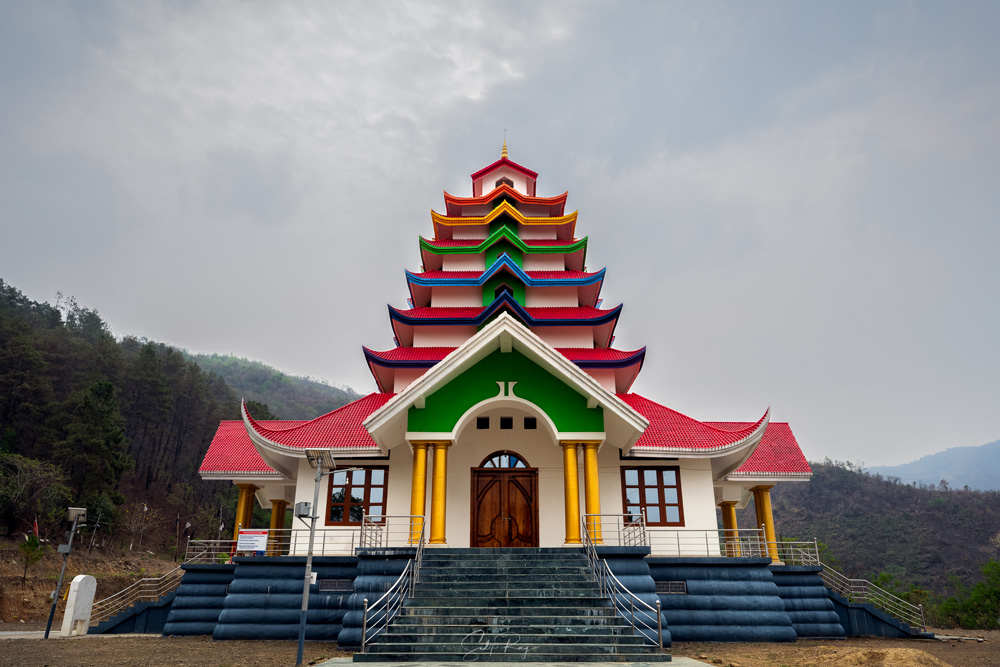
Our last destination was Langei Model Village. We wanted to watch weavers weaving their magic on textiles. However, owing to the pandemic situation, weavers have gradually stopped coming to the center and prefer weaving at home. There was only one woman, working with her tools and weaving a ceremonial ‘Phanek’.
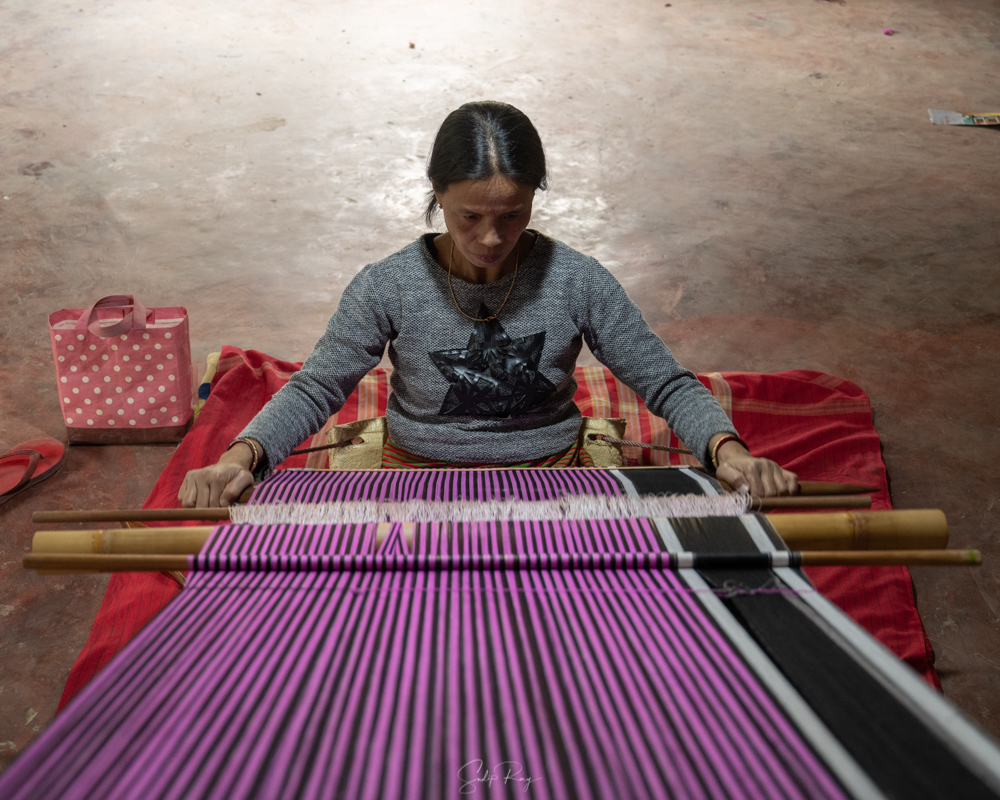
Things to remember:
- Like other northeastern states of India, Inner Line Permit (ILP) is mandatory for entering Manipur. You can get it beforehand from the online portal of Manipur Government. Or you can make one at the airport on arrival.
- Carry your Covid – 19 vaccination certificate if you have both the doses. In case you are yet to get your vaccine, carry a negative RT-PCR test result done 72 hours prior of travelling.
- Gone are the days when Manipur was volatile. At present, it is absolutely safe for traveling.
- The ecology of Loktak is vulnerable. Therefore, while visiting Loktak Lake, refrain from littering and using plastic.
- Same goes for Keibul Lamjao National Park. Its absolutely important to travel responsibly here as the ecosystem is at risk owing to unchecked human interference.
- Respect the customs and culture of the locals.
